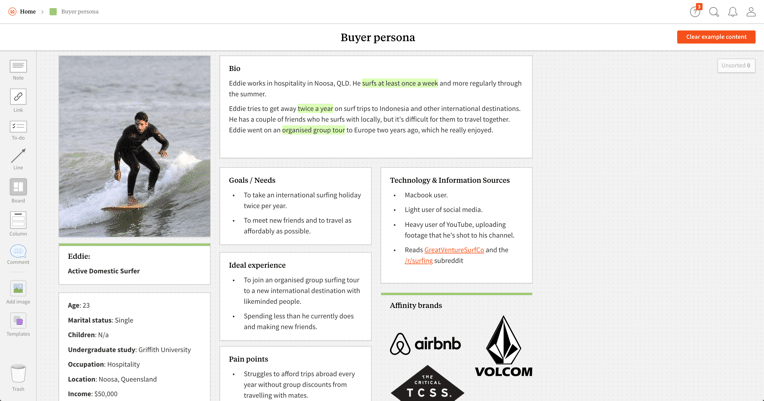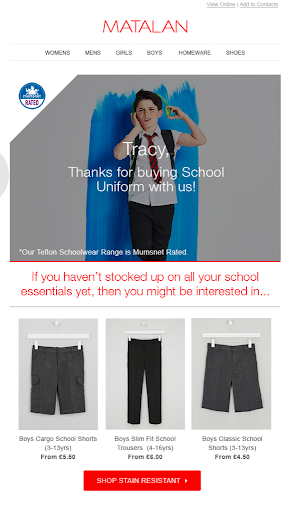This is a guest post from Manish Dudharejia at E2M Solutions Inc.
Launching a new business is extremely exciting. There’s an indescribable feeling that many entrepreneurs experience when they’re able to take their dream and turn it into a reality—whether it be through an ecommerce platform, a physical storefront, or seeing their product on the shelves.
However, once the excitement of launching that new business idea wears off, many first-time entrepreneurs are faced with the tough reality of a new challenge.
As a new company, one of the most difficult obstacles that you’ll face from day one is attracting people to your business website and convincing them to convert.
This can be extremely tough for businesses that don’t have huge customer databases or massive marketing campaigns, especially since brand recognition is so influential on consumer behavior.
This is why a consistent email campaign is necessary to create brand awareness.
Most customers aren’t going to convert on their first interaction with your business (or even the second or third). But building an effective email campaign can help keep your business or product at the forefront of their minds and, ideally, shorten the sales cycle.
So how can brand new businesses create a successful drip campaign that influences sales and starts to build awareness for your brand?
Establish your targeted group.
Often, new businesses will make the mistake of setting their net a little too wide during email campaigns in hopes of catching more leads. However, a narrow approach is actually far more effective. Segmented email campaigns that target specific audiences have shown to drive in 760% more revenue than generic ones.
This is why the most important step to creating an effective drip email campaign is knowing who exactly you’re speaking to. In order to create email content that’s relevant to them, you need to understand who they are, what motivates them, and what influences their behavior.
Figuring this out from the get-go can be quite tricky for new businesses that lack large sums of consumer data to base their decisions on. This is why creating customer personas can be extremely useful to act as a guide once you start building an audience database.
Start by using any past data you have from your customers, along with market research to create buyer personas to segment your audience based on behavior and preferences. For instance, some customers tend to be more motivated by price and would prefer content alerting them about sales and promotions.
Others may be more interested in the academic side of things, such as proof that your product works or thought-leadership content regarding your industry.
In order to set up an effective drip campaign, you’ll also need to start segmenting your email list based on the ways that your customers have interacted with your website.
For example, you’ll want to create separate campaigns for various segments, such as blog and newsletter subscribers, customers with accounts, free trial users, first-time purchasers, and social media followers.
Learn how to segment your list with our segmentation guide.
Create clear objectives for each drip campaign.
It’s impossible to reach a goal of any marketing strategy without knowing what your ultimate purpose is, so goal-setting needs to be the starting point of all of your effective drip campaigns.
Ask yourself what the main objective is for each segment (beyond simply gaining more conversions).
Is it:
- To nurture a lead?
- To cross-sell and upsell orders?
- Improve the customer experience?
- Encourage referrals and advocacy?
- Re-engage a customer after an initial purchase or abandoned cart?
- Promote an event, sale, or limited-edition product?
Each of these campaigns will have a different look and require various content in order to be effective. Furthermore, these emails won’t be relevant to your entire audience, so they’ll need to be segmented to various groups based on factors like past interactions.
For example, the ultimate goal of this email from Derma E is to re-engage a customer with a previously viewed product.

They’re trying to incentivize people by sending an exclusive offer.
Another good example is from Matalan, an online clothing store.
The email works to cross-sell by encouraging a customer to add more items that are related to their most recent purchase.
Both of the emails above clearly speak to different audiences with different motivations. Be sure you know what your goal is for each campaign before you start creating content and strategizing.
Build a trigger map.
Drip campaigns are designed to be automated based on behavioral triggers, as well as pre-set schedules based on customer lifecycles. This means that you’ll need to figure out when and why an email should be sent out.
Start off by mapping the customer journey that’ll take them from first interaction to final conversion. Then pinpoint the opportunities where a well-timed email could be useful.
For example, imagine that they click on a PPC ad and arrive to a product page. They then create an account and make a purchase.
Subscribers should receive a welcome email after creating an account, an order confirmation email, and then, several days later, a feedback email asking how their experience was, how they liked the product, and possibly promoting other products they may be interested in.
Now, what about the more complicated journeys?
Not every customer is going to follow such a straightforward path, so you need to take a look at the different opportunities that you can use to reach out and re-engage a customer or push them from one stage to the next.
Learn to re-engage subscribers in just five steps.
Consumer data is very helpful here. But, obviously, new businesses won’t have too much to go on, so you’ll have to create your own path.
Map out which emails will follow which behavior, as well as the time that should pass between each email.
Think about the kind of content that’ll influence that specific customer toward the next logical step.
For instance, if they downloaded your whitepaper, they may be interested in watching a webinar too. Sending an invitation in the next day or two could re-engage them with your website.
Look for ways to personalize.
Generic emails are often deleted faster than personalized ones, so look for ways to customize each message with details that will capture their attention.
One great tip here is to make each email appear like it was personally typed out to that specific customer by addressing their situation and recognizing past interactions.
Find out how to personalize your emails by reading this article.
An email may seem simple and personalized, but it can be created by setting up an effective drip campaign that automatically inserts customized touches based on that account’s behavior.
Just look at this replenishment email from Sephora that sends a personalized recommendation, simply based on subscriber data.

As time goes on and you start to gather more customer data, you can incorporate even more personalized touches.
Wrap up
A strategic drip campaign can help your new business grow exponentially faster by targeting the right audiences, building brand awareness, and influencing conversions.
It can be tricky for new companies to create an effective approach with little behavior data to go on, but the most important thing to do here is get started and adjust along the way.
Start by getting to know your audience and connecting the dots between email content and their behavior.
As time goes on and you start to receive feedback and consumer data, you can make the necessary changes to optimize your effective drip campaign so that it works better and better each time.
Author Bio
Manish Dudharejia is the President and Founder of E2M Solutions Inc., a San Diego-based digital agency that specializes in white label services for website design and development and e-commerce SEO. With over 10 years of experience in the technology and digital marketing industry, he is passionate about helping online businesses take their branding to the next level.








